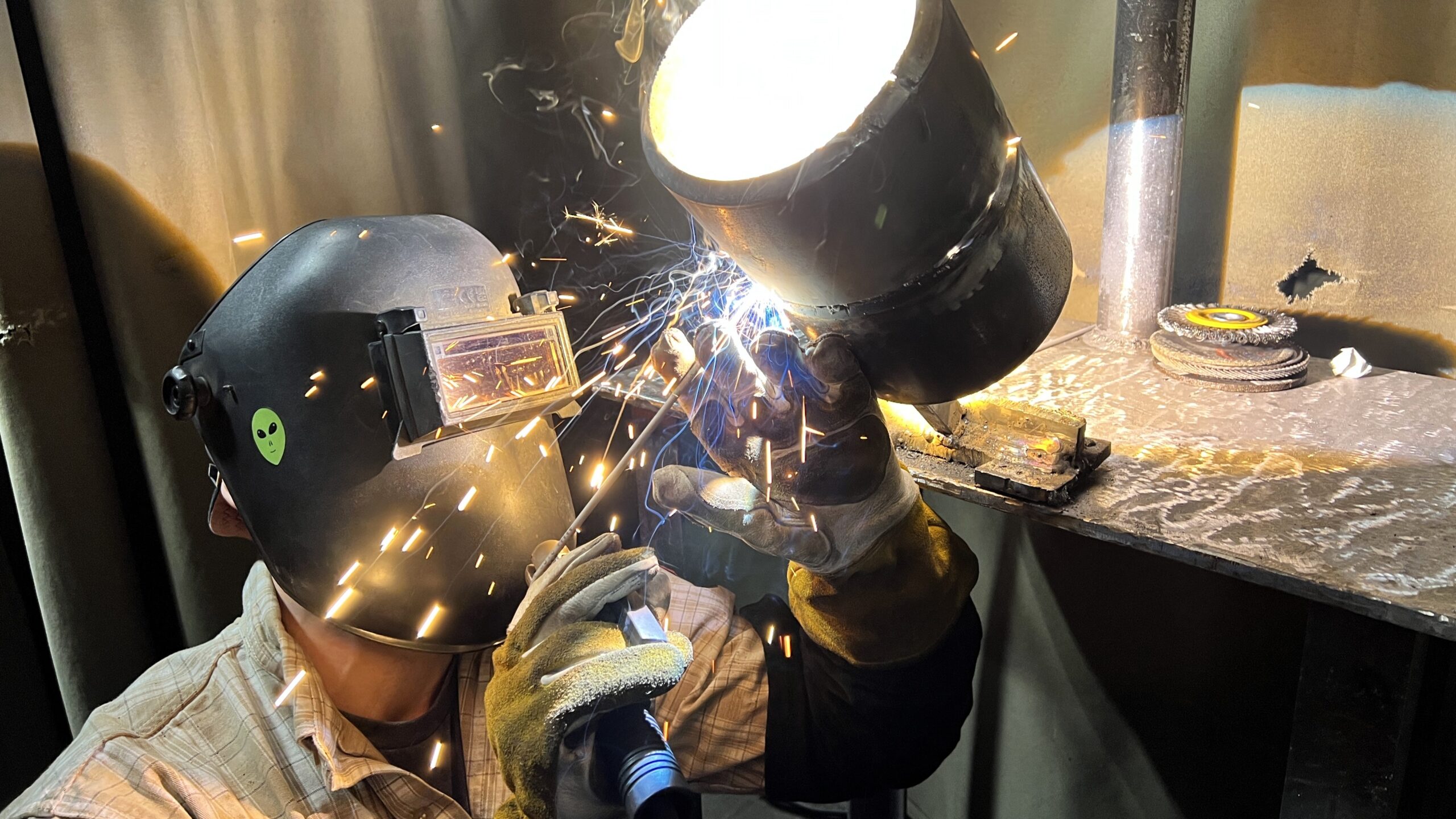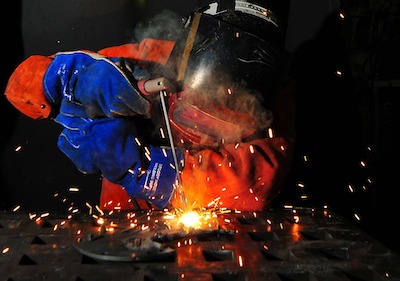What Belgrade Fabrication uses as go-to strategies for dealing with incomplete fusion
Everything about Welding: Key Insights Into Techniques and Ideal Practices for Success
Welding incorporates a selection of strategies, each fit for certain materials and applications. Recognizing these techniques, such as GMAW, SMAW, and TIG, is necessary for achieving ideal results. Moreover, the appropriate tools and safety techniques can not be ignored. As prep work and repairing play critical functions in the welding procedure, grasping these elements can significantly improve the high quality of the last item. What are the crucial elements that ensure a successful weld?
Understanding Various Welding Strategies
Welding methods encompass a range of techniques, each suited to details applications and products. Among the most usual techniques are Gas Steel Arc Welding (GMAW), Protected Metal Arc Welding (SMAW), and Tungsten Inert Gas Welding (TIG) GMAW, likewise referred to as MIG welding, is preferred for its speed and convenience, making it ideal for thin materials. SMAW, or stick welding, is preferred for its simplicity and effectiveness in exterior environments, especially with thicker metals. TIG welding supplies precision and control, making it appropriate for intricate work and non-ferrous steels (Welding). Each strategy has its unique benefits and factors to consider, permitting welders to pick the very best approach based on the job's needs, material type, and preferred end results. Comprehending these strategies is crucial for successful welding
Important Welding Devices and Tools
While numerous welding strategies call for specific skills, the best devices and tools are equally vital for attaining quality results. Crucial welding devices includes welding makers, which differ depending upon the method-- such as MIG, TIG, or stick welding. Protective equipment, consisting of aprons, safety helmets, and gloves, assurances security and comfort during the procedure. On top of that, clamps and fixtures assist protect materials in position, making certain precision in welds. Consumables like welding rods, cord, and shielding gas are likewise vital elements that influence the high quality of the weld. Devices such as cutters and grinders facilitate surface preparation and post-weld ending up, adding to a specialist result. Investing in high-quality tools eventually enhances the performance and efficiency of welding jobs.
Safety Practices in Welding
Correct security techniques are essential in the welding sector to protect workers from possible threats. Welders have to use suitable personal protective devices (PPE), including safety helmets with proper shading, handwear covers, and flame-resistant clothing. Adequate ventilation is crucial to lower direct exposure to unsafe fumes and gases created during the welding process. In addition, workers need to be learnt the proper handling of welding equipment to stop accidents. Fire security steps, such as maintaining combustible materials far from the welding location and having fire extinguishers conveniently available, are required. Normal evaluations of devices and workspaces can assist recognize potential hazards before they bring about mishaps. By sticking to these safety and security methods, welders can create a more secure working atmosphere and reduce dangers connected with their trade.
Preparing Materials for Welding
Preparing materials for welding is an important step that greatly affects the high quality and stability of the end product (Montana Mobile Welding and Repair Belgrade Welding). Correct prep work involves cleansing the surface areas to remove pollutants such as oil, dirt, and rust, which can compromise the weld. Techniques such as grinding, fining sand, or using solvents are commonly employed to achieve a clean surface area. Additionally, guaranteeing that the materials mesh well is crucial; voids can cause weak welds. It's additionally vital to take right into account the positioning and positioning of the components, as this will certainly impact the convenience of welding and the final result. Picking the appropriate filler product and making certain compatibility with the base steels is vital for accomplishing strong, resilient welds.
Tips for Getting High-Quality Welds
Attaining top notch welds needs attention to detail and adherence to ideal practices throughout the welding process. Proper joint prep work is vital, guaranteeing surfaces are cost-free and clean from impurities. Picking the ideal filler material and welding strategy based upon the base metals is essential for ideal bonding. Preserving regular traveling speed and angle while welding can prevent issues and promote harmony. In addition, controlling heat input is necessary; excessive heat can result in bending and deteriorated joints. If essential, routinely evaluating the welds during the procedure enables for immediate adjustments. Employing appropriate post-weld therapies, such as cleansing and stress alleviation, can improve the longevity and honesty of the weld, eventually guaranteeing an effective end result.
Fixing Typical Welding Issues
Welding often offers challenges that can affect the top quality and honesty of the final item. Usual problems such as porosity, irregular weld grains, and getting too hot can emerge, each calling for specific repairing methods. Comprehending these troubles is crucial for welders to improve their skills and accomplish perfect outcomes.
Porosity Problems Explained
Although porosity can often be forgotten, it remains a crucial concern in welding that can compromise the honesty of an ended up product. Porosity describes the presence of little gas pockets within the weld grain, which can compromise the joint and lead to early failing. This problem usually arises from pollutants, dampness, or inappropriate securing gas insurance coverage during the welding procedure. To mitigate porosity, welders ought to verify that the base materials are dry and clean, make use of proper shielding gases, and preserve constant welding specifications. On a regular basis evaluating the equipment and atmosphere can additionally aid identify potential issues before they materialize in the weld. Attending to porosity properly is essential for accomplishing solid, sturdy welds that see it here fulfill quality requirements.

Inconsistent Weld Beads
Inconsistent weld grains can considerably affect the high quality and stamina of a completed item. Numerous factors add to this problem, consisting of incorrect travel rate, inaccurate amperage settings, and inconsistent electrode angles. When the welder moves as well swiftly, a grain may appear narrow and lack infiltration, while relocating as well gradually can create extreme accumulation. In addition, utilizing the wrong amperage can lead to either undercutting or too much spatter, both of which concession weld integrity. The welder's method, such as irregular torch movement, can also cause irregular bead appearance. To alleviate these problems, welders must focus on keeping stable, regulated movements and making sure correct equipment settings to attain harmony in their welds. Uniformity is key to attaining trustworthy and solid welds.
Getting Too Hot and Warping Issues
Excessive warm throughout the welding procedure can jkarc lead to substantial getting too hot and deforming concerns, affecting the architectural honesty of the work surface. These issues usually show up as distortion, which can endanger placement and fit-up, making additional assembly challenging. Factors adding to overheating include the selection of welding specifications, such as voltage and take a trip speed, along with the sort of material being bonded. To alleviate these issues, welders ought to keep regular traveling speed and appropriate warmth input while keeping track of the workpiece temperature level. Additionally, pre-heating or post-weld heat therapy can help minimize anxieties brought on by fast air conditioning - Montana Mobile Welding and Repair Belgrade. Regular examination and adherence to finest techniques are necessary in avoiding overheating and making certain the durability and dependability of welded frameworks
Frequently Asked Concerns
What Are the Job Opportunities in the Welding Market?
The welding sector supplies varied career chances, consisting of placements as welders, teachers, engineers, and examiners. Experts can operate in manufacturing, building and construction, aerospace, and automotive markets, gaining from solid need and affordable salaries in different roles.
How Can I Enhance My Welding Rate Without Compromising Top Quality?
To improve welding rate without sacrificing high quality, one must exercise effective methods, keep tools, maximize settings, and boost hand-eye sychronisation. Normal training and seeking responses can also considerably add to attaining much faster, top notch welds.
What Accreditations Are Available for Welders?
Various certifications exist for welders, including those from the American Welding Society (AWS), the National Facility for Building More Help And Construction Education and Study (NCCER), and various industry-specific organizations. These qualifications improve employability and demonstrate skill efficiency.
Exactly How Does Welding Influence the Characteristics of Metals?
Welding influences the buildings of steels by modifying their microstructure, which can bring about changes in strength, hardness, and ductility. Warm input and cooling rates during the procedure greatly influence these material attributes.
Can I Bonded Dissimilar Metals With Each Other?
